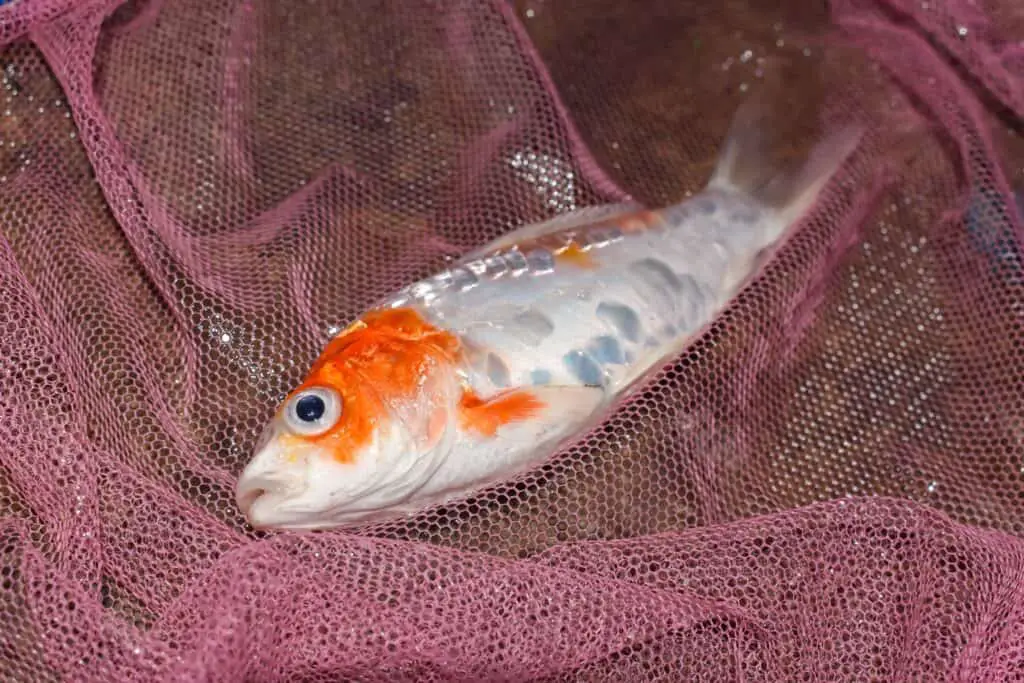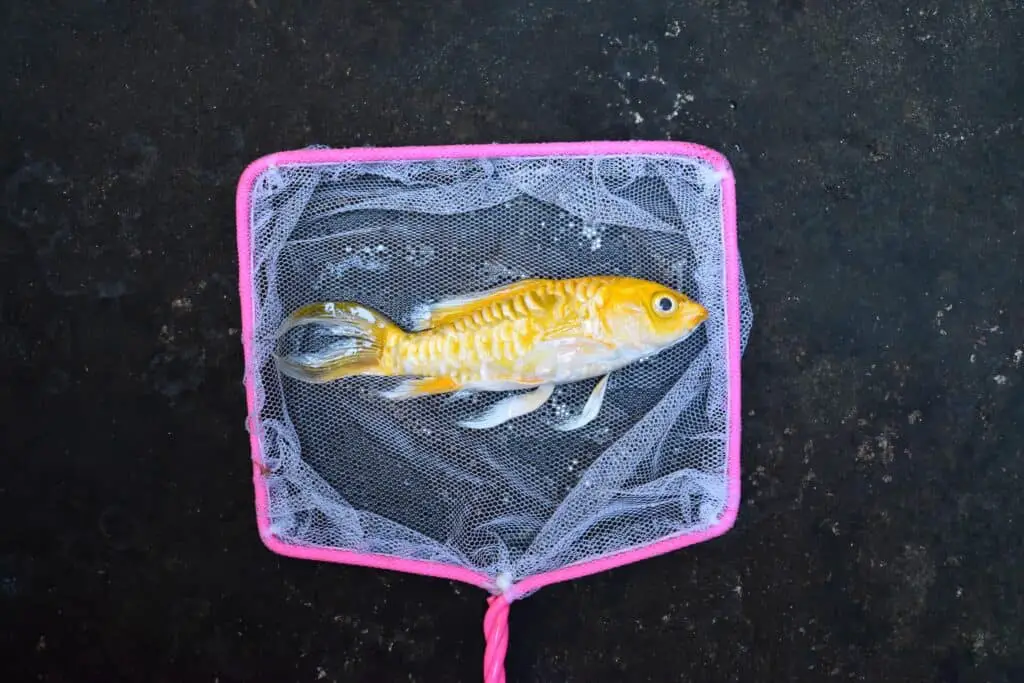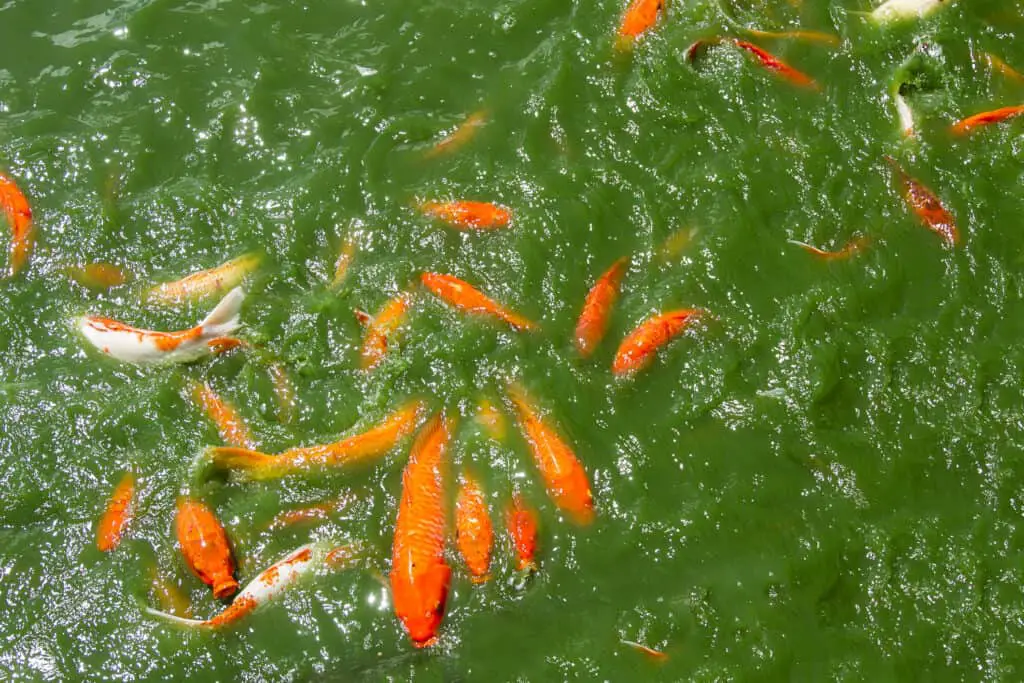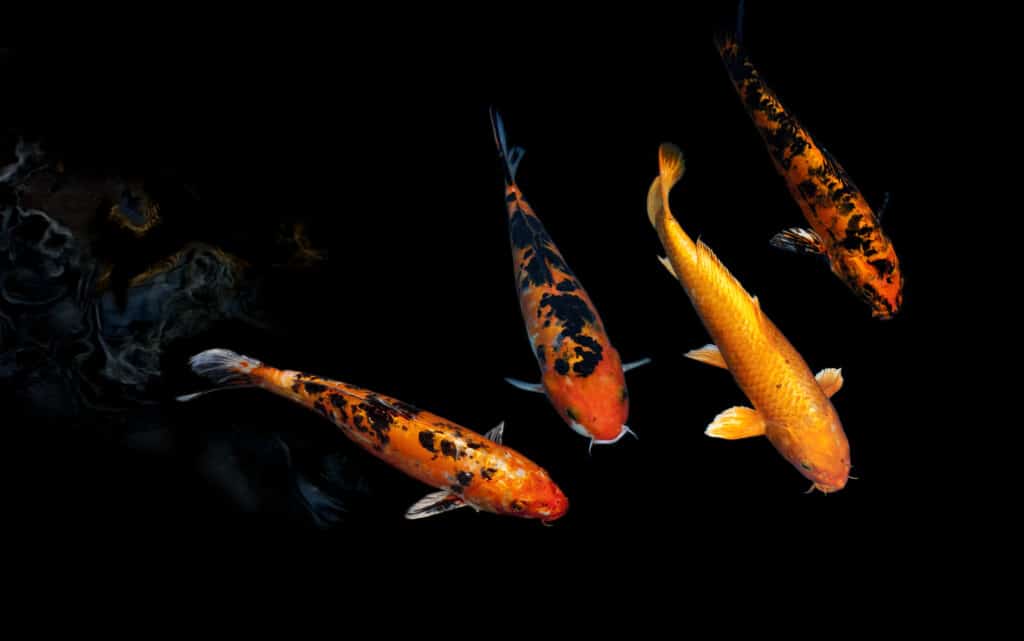
When you keep koi fish in a pond, it is your responsibility to monitor their health and ensure that their environment is clean and free from parasites. Often diseases that affect koi are a direct result of issues in the pond, like overcrowding, poor water quality, or incorrect nutrition.
Sick koi fish appear sluggish, bloated, roll over onto their side, and their breathing may look labored. Sick koi fish can have bulging eyes, ulcers on their body, jagged fins, or scales that are lifting. Koi fish that are sick can lose their skin and develop lesions on their skin, fins, and gills.
There are many different parasites and diseases that affect koi and make them sick. Here, we explain how to tell if your koi fish is sick and how to diagnose what the problem may be. If you recognize the issue early on, there is a chance that you can save your sick koi!
Pro Tip: If you’re tired of wasting money and making costly mistakes on the koi-keeping hobby or are thinking about buying koi fish but don’t know where to start, I strongly suggest you check out this ebook. I recently read this ebook, and it contains SO much useful information, such as:
- 3 proven steps to identify koi fish diseases
- WARNING: 3 things you should NEVER do when it comes to caring for koi
- When to seek professional help when it comes to looking after your koi
How To Recognize A Sick Koi Fish

If you spend time with your koi regularly, you will quickly notice if there is a problem with them. Changes in their behavior are the first sign of sickness.
Sick fish will start acting differently. They may rub their bodies against objects in the pond, constantly hang around the bottom of the pond with their fins close to their body, gasping for air at the water’s surface, or stay away from the rest of the koi. Sick koi may also avoid food.
When a koi fish is sick from a disease or parasite, they look different. Their skin may look discolored, and their eyes may become cloudy; their fins may look torn and jagged or have red streaks on them. Sick koi may look bloated, and they can have white spots or cottonwool-like tufts on their body.
Feel free to check out my blog post called How do you know if your Koi fish has parasites
Common Diseases In Koi Fish
Koi fish in backyard ponds are susceptible to various pests and diseases. The following issues are all common in koi fish:
- Ich/White Spot – this disease is caused by a protozoan found in ponds with low water quality. It looks like little white spots, similar to salt grains, all over the fish, especially the gills. The parasites feed on the koi’s skin and flesh. Ich is fatal to small fish.
- Dropsy/Pinecone Disease – bulging eyes, lifting scales, and bloating are all signs of this disease. It leads to koi’s liver and kidneys failing, which is fatal. Dropsy is contagious, so removing an infected koi as soon as possible is critical to prevent losing all the fish in the pond.
- Tail and fin rot – koi fish with compromised immune systems due to stress or low water quality are susceptible to bacteria that physically damage their fins and tail. Tail and fin rot can be treated. It is not terminal.
- Mouth rot – infected sores in and around koi’s mouths is a sign of poor water quality. Koi fish with mouth rot can be treated. The infection is not fatal if you catch it in time.
- Chilodonella – this notorious disease is caused by a protozoan, and it is fatal. You will see fish infected with Chilodonella rolling over onto their sides or dead on the water’s surface.
- Ulcers and fin erosion – infected sores or ulcers on koi fish are caused by Aeromonas and Pseudomonas bacteria. These parasites can be treated by giving the fish an injection.
- Columnaris/Cotton Wool Disease – bacteria cause sores on koi’s fins, mouth, and tail. Their skin looks dry, and you will see white threads around the koi’s mouth. Additionally, fish develop a white, cloudy film on their skin and their eyes look sunken. Columnaris is fatal and quickly kills koi. It can be treated with medicated feed.
- Anchor worm – this parasite is a tiny crustacean that digs into koi’s skin, feeding on its flesh. This causes secondary bacterial or fungal infections. Anchor worms can be removed with tweezers, and the pond water can be treated to kill them.
- Fish lice – these parasites have large suckers that they use to attach themselves to koi. They have rounded bodies with eight legs. Koi fish will attempt to rub the lice off on objects in the pond because they irritate the skin. Lesions caused by fish lice can become infected.
- Fungal infections – koi develop white, fluffy growths on their body. You may see white, brown, green, or yellow raised bumps on the fins. Fungal infections can be treated if you notice them early enough.
- Lymphocystis – sudden changes in water temperature can cause this disease. It is brought on by a virus but is not fatal nor contagious. Koi fish develop rough, raised sores on their body, and their skin looks discolored. Lymphocystis is treatable, but it can also go away on its own.
- Carp Pox – this viral disease presents as pink, waxy-looking, raised growths on koi’s skin. Luckily Carp Pox is not fatal or contagious and is common in winter and spring. It can go away on its own in summer. There is no treatment for this disease.
- Gill and skin flukes – these microscopic parasites feed on the slimy coating on koi’s skin that protects them. They also feed on the gill tissue. This causes secondary infections, ulcers, and breathing issues. Koi will try to rub themselves against the pond’s walls or floor.
If you want to learn more about dropsy/pinecone disease, ich/white spot, chilodonella, anchor worm, fish lice and gill, and skin flukes, check out my blog post called how do you know if your Koi fish has parasites?
Some of these diseases can cause your Koi fish to die. If you want to learn more about Koi fish killers, check out my blog post, The 9 things that can cause your Koi to die suddenly.
Why Do Koi Fish Get Sick?


The main reason for koi fish getting sick is poor water conditions. If oxygen is low in the water, there are high levels of ammonia, or the water temperature is too high or low, the fish become stressed, making them more susceptible to diseases and parasites.
Poor nutrition is another factor that can lead to fish becoming sick. They need a complete diet to maintain healthy immune systems.
Overcrowding of a koi pond will increase the fish’s risk of disease because it diminishes water quality and stresses the koi.
Why Is My Black Koi Turning Orange?

Koi fishes’ genetics determines their coloration, but some changes to the color of their scales are normal. Black koi often have orange bellies. Without enough sunlight, black koi can turn orange. Changing seasons can lead to color changes in koi.
If you would like to learn more about Koi fish colors, check out my blog post How can I enhance my Koi fish’s color.
Why Is My White Koi Turning Yellow?

When the levels of nitrates in the pond water get too high, it can cause koi fish’s liver and kidneys to be compromised. This can cause white koi to turn yellow.
During summer, when there is more intense sunlight, white koi fish can turn yellow (almost as if they are catching a tan). This is normal and not a sign of stress.
A water test will determine whether your white koi turning yellow is benign or a sign of a problem.
Conclusion
Generally, it’s easy to tell if a koi fish is sick just by looking at them. Sick koi fish may look lethargic, hanging around the bottom of the pond on their own. They may look bloated or roll over onto their sides. Diseases and parasites that affect koi cause skin lesions, ulcers, discoloration, fin and tail erosion, and secondary bacterial and fungal infections.
Related blog posts
- How Do You Know If Your Koi Fish Has Parasites?
- The 9 Things That Can Cause Your Koi To Die Suddenly
- 5 Reasons Why Your Koi Fish Is Bloated (And What To Do About It)
- Why is my Koi so small?

